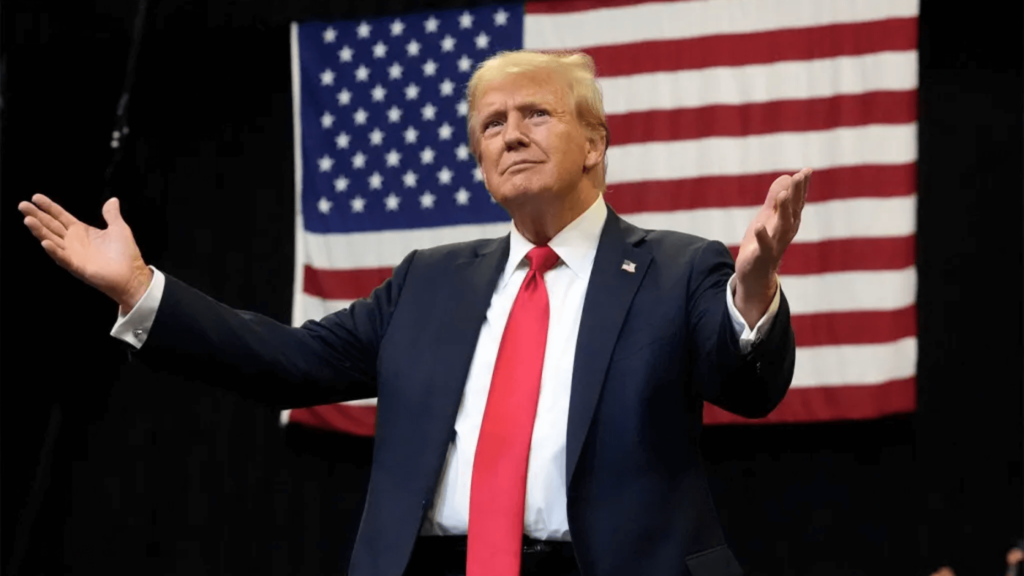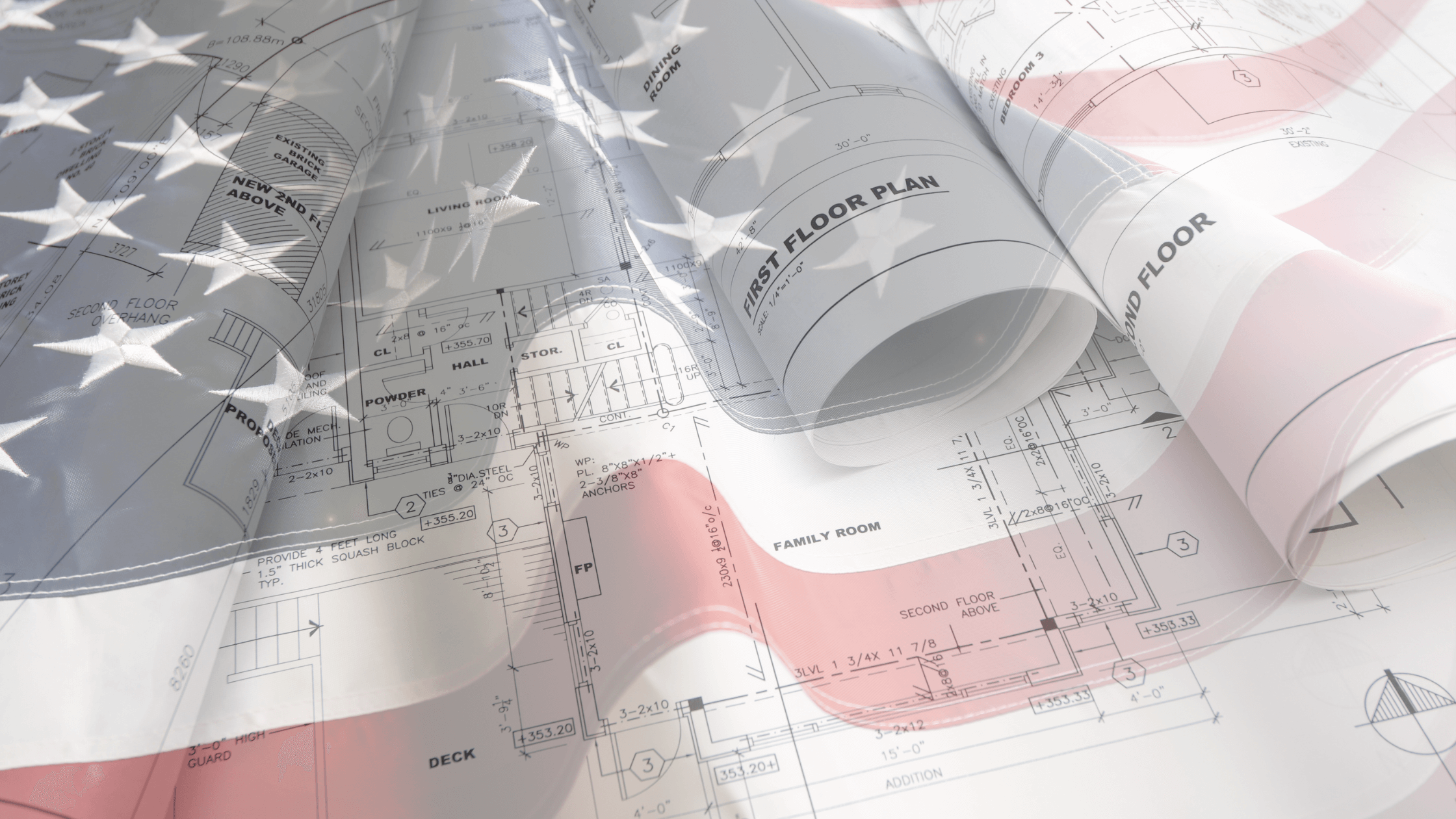Big changes could be on the horizon for the construction industry in the wake of the 2024 presidential election. As federal policies shift under the weight of a new presidency, everything from project funding to workforce dynamics may feel the impact. With billions already invested in infrastructure, industry leaders are bracing for what’s next and planning how these changes might shape the future of building in Trump’s America.

Quick look
- The election outcome could reshape the construction industry, affecting infrastructure funding, labor availability, and economic policies.
- Potential deregulation under Trump may streamline project approvals but risks environmental sustainability and oversight.
- Strict immigration policies could exacerbate construction labor shortages, increasing costs and project delays.
- Changes in tax policies, tariffs, and interest rates may influence construction financing, project costs, and profitability.
Infrastructure investment and policy changes
The construction industry is bracing for what’s next, as Trump’s win could bring some fundamental shifts in funding and policies.
The Infrastructure Investment and Jobs Act (IIJA): Current state
Signed in 2021, the IIJA unlocked a historic $1.2 trillion to rebuild and modernize America’s infrastructure. Focusing on everything from highways to high-speed internet, this law set the stage for a massive boost in construction projects and jobs nationwide. Since its rollout, the funding has paved the way for over 40,000 projects and helped replace thousands of aging bridges, making roads safer and boosting local economies.
Nearly $400 billion has already been set aside for critical infrastructure projects like roads, bridges, and public transit, but a chunk of unspent funds still need to be raised. Depending on Trump’s approach to these investments, that leaves the door open for even more future projects to get the green light.
Trump’s approach: Cut back and speed up
Trump has indicated that his second term might focus on reducing regulations and scaling back on some infrastructure spending. While there’s no clear plan yet, some industry experts wonder if any remaining IIJA funds might be pulled back. Still, cutting funding from a bill with bipartisan support could be a tricky move.
If the focus shifts to deregulation, projects could move forward more quickly, but the trade-off might be less oversight of environmental standards. Any cuts to the IIJA or similar programs could put the brakes on some projects, especially those aimed at long-term infrastructure improvements. Construction companies and developers will need to stay flexible and monitor how these policies play out.
Labor market and workforce development
The construction industry is facing significant challenges in maintaining a robust workforce; the sector has been grappling with a persistent labor shortage. In 2024, the industry needed to attract an estimated 501,000 additional workers beyond the average hiring pace to meet labor demand. This shortage has led to project delays, increased labor costs, and heightened competition for skilled workers.
Impact of immigration policies on workforce availability
Immigration policies significantly influence the construction labor market. A substantial portion of the construction workforce comprises immigrants, including undocumented workers. For instance, between 2011 and 2013, approximately 13% of construction workers were undocumented, higher than the national average of 4.9%. Stricter immigration enforcement could reduce the available labor pool, exacerbating existing shortages and impacting project timelines and costs.
Vice President Kamala Harris strongly advocated labor unions and worker protections. She supported policies that enhance workers’ rights, including the right to organize and bargain collectively. Harris has also endorsed measures to improve workplace safety and increase wages, aiming to strengthen the labor force and address workforce shortages through domestic labor development.
Conversely, President-elect Donald Trump has proposed stringent immigration policies, including mass deportations of undocumented immigrants. Given the industry’s reliance on immigrant workers, such measures could significantly reduce the construction labor pool. The American Immigration Council estimates that mass deportation could result in the removal of millions of workers in sectors like construction, potentially reducing the GDP by $1.7 trillion.
Anticipated changes in workforce development programs
The incoming administration’s policies may change workforce development programs. Focusing on deregulation and reduced federal oversight could alter funding and support for training initiatives to address labor shortages. Conversely, stricter immigration policies may necessitate increased investment in domestic workforce development to compensate for the reduced availability of immigrant labor.
Navigating these evolving labor market dynamics will be crucial for the construction industry to maintain productivity and meet the nation’s infrastructure needs.
Economic policies and construction costs
The 2024 presidential election has ushered in potential shifts in economic policies that could significantly impact construction costs. Key focus areas include tax policies, trade and tariffs, interest rates, and financing.
Tax policies
President-elect Donald Trump has proposed several tax initiatives that could affect the construction industry. He aims to make the individual and estate tax cuts from the 2017 Tax Cuts and Jobs Act (TCJA) permanent and has suggested lowering the corporate tax rate from 21% to 20% or even 15% for domestic production. These measures could increase after-tax profits for construction firms, enabling more investment in projects and workforce expansion.
Trade and tariffs
Trump has proposed imposing a universal baseline tariff on all U.S. imports, with additional tariffs of 60% to 100% on goods from China. For the construction industry, which relies on imported materials like steel and aluminum, such tariffs could increase material costs. Higher input costs may result in elevated project expenses and could slow the initiation of new projects.
Interest rates and financing
The Federal Reserve operates independently of the executive branch; however, presidential policies can indirectly influence its decisions. President-elect Trump’s proposed tax cuts and increased tariffs could lead to inflationary pressures, potentially prompting the Federal Reserve to raise interest rates to curb inflation. Higher interest rates would increase borrowing costs for construction companies, affecting project financing and overall profitability.
An increase in interest rates would also directly impact construction financing by raising the cost of loans for new projects. Additionally, higher mortgage rates could dampen demand in the housing market, leading to a slowdown in residential construction. Construction firms may face tighter profit margins and reduced project pipelines as financing becomes more expensive and consumer demand potentially declines.
Environmental regulations and sustainability
The construction industry is significantly influenced by environmental regulations, which shape building practices and sustainability efforts by minimizing the environmental footprint of construction activities. Several key environmental regulations impact the construction sector:
- The Clean Water Act (CWA) regulates the discharge of pollutants into U.S. waters, requiring construction sites to implement measures to prevent water contamination.
- Clean Air Act (CAA) controls air emissions from stationary and mobile sources, affecting construction equipment and site operations to reduce air pollution.
- The National Environmental Policy Act (NEPA) mandates environmental impact assessments for significant federal projects, which influence construction planning and execution.
Trump, deregulation, and the impact on sustainable construction practices
Trump has emphasized deregulation, particularly concerning environmental policies. During his previous term, the administration rolled back over 100 environmental rules, including those designed to reduce carbon dioxide emissions and protect wetlands.
In his 2024 campaign, Trump proposed further deregulation to expedite infrastructure projects and reduce costs. This approach could lead to relaxed environmental standards, potentially impacting sustainable construction practices. While deregulation may streamline project approvals, it raises concerns about environmental degradation and long-term sustainability in the construction industry.
Regional Impacts and Case Studies
The 2024 presidential election has set the stage for significant shifts in federal policies, prompting varied responses from states and influencing regional construction activities.
State-Level Reactions
Responses to Federal Policy Changes
States will likely react differently to the new administration’s policies based on their political leadership and regional priorities. For instance, states with Democratic leadership may continue to prioritize clean energy projects and maintain stringent environmental standards, even if federal regulations are relaxed. Conversely, Republican-led states might align more closely with federal deregulatory measures, potentially accelerating project approvals and reducing compliance costs.
Bottom line
In the aftermath of the 2024 election, the construction industry will face a rapidly changing landscape shaped by shifts in federal policies on infrastructure funding, labor, economic regulations, and environmental standards. The potential impacts on project timelines, workforce availability, construction costs, and sustainability efforts will demand that industry leaders stay informed and responsive. Adaptability will be essential for construction companies and stakeholders navigating these changes as federal priorities shift.
Want more? Subscribe to our weekly newsletter for the latest news, insights, and advice delivered directly to your inbox.




1 comment